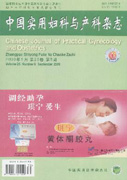Abstract: With the development of the application of assisted reproductive technologies and the increasing of maternal age, the frequency of twin gestations has increased severely. The risk of fetal structural anomalies and placental abnormalities in twins is much higher compared with singleton. Some of the nonspecific placental abnormalities can be found in twin gestations which can also be seen in singleton gestations, such as placenta previa, placental abruption, etc. However, other anomalies are unique to twin gestations, and are mainly associated with monochorionic twins, which include intraplacental anastomosis. Most of abnormalities can be diagnosed with ultrasound, including determination of chorionicity and amnionicity, and the identification of placental anomalies. Pathologic placental examination after delivery is useful in assessing the presence of placental abnormalities, as well as providing information about chorionicity and understanding the potential mechanisms of disease affecting twin gestations.

